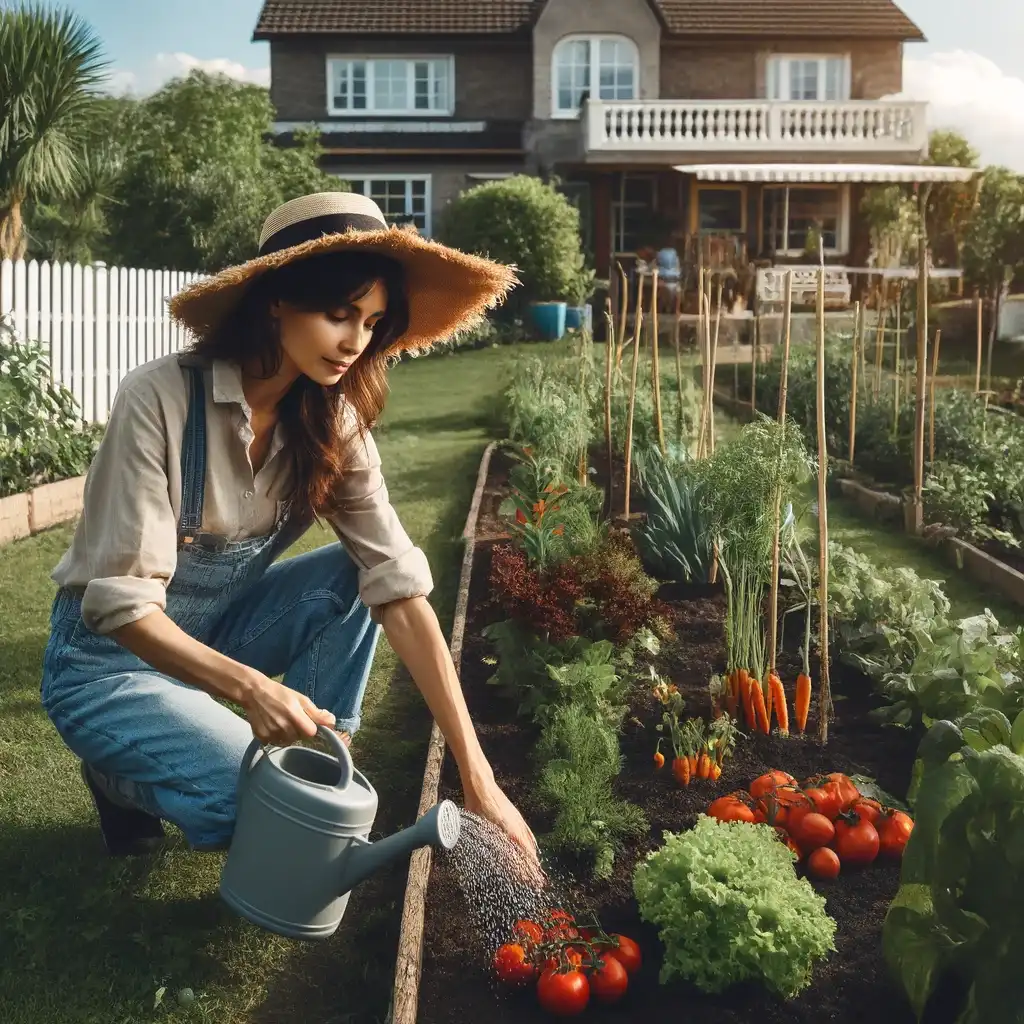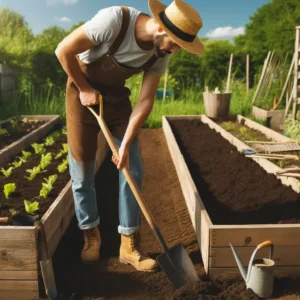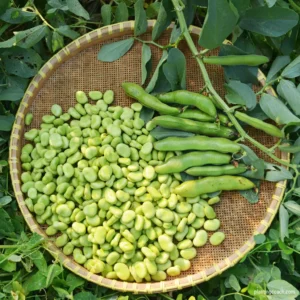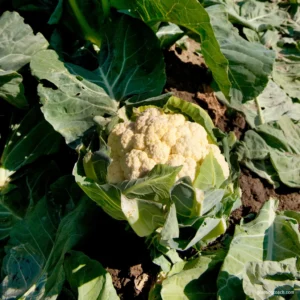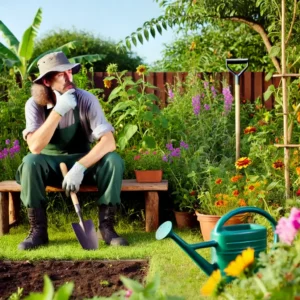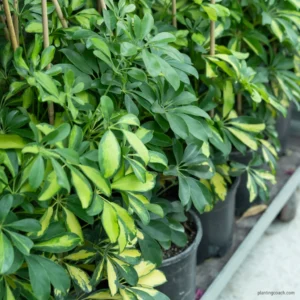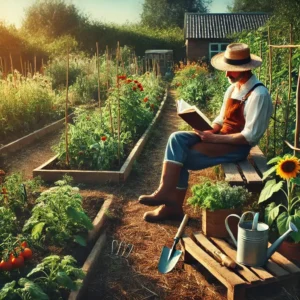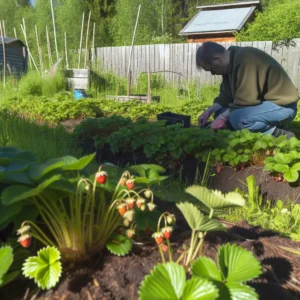Growing your own vegetables in your backyard is a rewarding and sustainable way to ensure access to fresh, nutritious produce. Not only does gardening provide a source of healthy food, but it also promotes physical activity, reduces stress, and contributes to environmental sustainability. Homegrown vegetables often taste better and have higher nutritional value than store-bought ones because you can harvest them at their peak ripeness.
Additionally, starting a vegetable garden allows you to control the use of pesticides and fertilizers, ensuring that your food is safe and free from harmful chemicals. In this comprehensive guide, we will cover everything you need to know to start a successful vegetable garden in your backyard, from selecting the perfect location to harvesting and storing your produce. Whether you are a seasoned gardener looking to expand your knowledge or a complete beginner, this guide will provide valuable insights and practical tips to help you cultivate a progressing vegetable garden.
This is How to Start a Vegetable Garden in Your Backyard
Choosing the Right Location
Selecting the right location for your vegetable garden is crucial to ensure the health and productivity of your plants. Vegetables generally require a minimum of six to eight hours of direct sunlight each day to grow healthy. Therefore, choose a spot in your backyard that receives ample sunlight throughout the day. Observe the sun patterns in your yard to identify areas that get the most light. Additionally, consider the quality and drainage of the soil. Good garden soil should be rich in organic matter, well-draining, and loose enough for roots to penetrate easily.
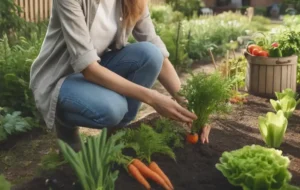
Avoid areas where water tends to pool after rain, as soggy soil can lead to root rot. Proximity to a water source is another important factor. Having a nearby water supply makes it easier to keep your plants hydrated, especially during dry periods. Lastly, choose a location that is convenient to access. If your garden is too far from your home, you might be less inclined to tend to it regularly. By carefully selecting a location that meets these criteria, you will lay a strong foundation for a successful vegetable garden.
Planning Your Garden Layout
Planning your garden layout involves strategic decisions that can maximise space, ensure plant health, and improve yield. Start by determining the size of your garden based on the available space and your gardening goals. If you are a beginner, a smaller garden might be more manageable. Next, decide on the types of vegetables you want to grow. Consider their growth habits and space requirements. For example, clinging plants like cucumbers and peas need vertical support, while root vegetables like carrots and beets require adequate underground space.
Raised beds are a popular choice because they provide better control over soil quality and drainage and can be easier to maintain. Alternatively, in-ground planting works well if you have fertile, well-draining soil. Implementing companion planting can also benefit your garden. Certain plant combinations, such as tomatoes and basil, can improve growth and deter pests. Planning for crop rotation is essential to prevent soil depletion and reduce the buildup of pests and diseases. By rotating plant families each season, you can maintain soil fertility and health. Thoughtful garden layout planning will help you create a productive and efficient vegetable garden.
Preparing the Soil
Preparing the soil is a critical step in establishing a productive vegetable garden. Start by conducting a soil test to determine its pH and nutrient levels. You can purchase a soil test kit from a garden center or send a sample to a local agricultural extension office. Most vegetables prefer a slightly acidic to neutral soil with a pH between 6.0 and 7.0. If your soil is too acidic or alkaline, you can amend it with lime or sulfur to adjust the pH. Increasing soil fertility is equally important. Incorporate organic matter such as compost, well-rotted manure, or green manure (cover crops) to enrich the soil with essential nutrients and improve its structure.

This process also helps create a healthy environment for beneficial microorganisms and earthworms, which aid in soil health. Before planting, remove any weeds, rocks, or waste from the area. Use a garden fork or tiller to loosen the soil to a depth of at least 12 inches, breaking up large clumps to improve aeration and drainage. Rake the soil to level it and remove any remaining waste. Proper soil preparation will provide a strong foundation for your plants, promoting healthy growth and rewarding harvests.
Selecting the Right Vegetables
Selecting the right vegetables for your garden involves understanding your local climate and growing conditions. The USDA Plant Hardiness Zone Map is a useful tool for determining your climate zone and selecting vegetables that are more suitable for your area. Choose vegetables that match your region’s temperature ranges and growing season length. For beginners, starting with easy-to-grow vegetables like lettuce, radishes, beans, and tomatoes can be a confidence booster. These vegetables are relatively low-maintenance and provide quick rewards. When purchasing seeds or seedlings, look for healthy, disease-free specimens.
Heirloom varieties are popular for their unique flavours and historical significance, while hybrid varieties are often bred for disease resistance and higher yields. Consider the specific needs of each vegetable, such as sunlight, water, and spacing requirements, and group plants with similar needs together to simplify care. Additionally, plan for a mix of cool-season and warm-season crops to maximise your garden’s productivity throughout the growing season. By carefully selecting vegetables that are well-suited to your climate and garden conditions, you will set yourself up for a successful and enjoyable gardening experience.
Planting Your Vegetables
Proper planting techniques are essential for establishing strong, healthy vegetable plants. Timing is crucial; planting too early or too late can affect plant growth and yield. Follow the recommended planting dates for your climate zone and specific vegetables. For seeds, refer to the packet instructions for sowing depth and spacing. Typically, smaller seeds like lettuce and carrots are sown shallowly, while larger seeds like beans and peas are planted deeper. For transplants, dig a hole slightly larger than the root ball and gently place the plant in the hole, filling in with soil and firming it gently around the base.

Ensure that the root ball is level with the soil surface to prevent stem rot. After planting, water thoroughly to help settle the soil around the roots and eliminate air pockets. Mulching with organic materials such as straw, wood chips, or compost helps retain soil moisture, suppress weeds, and regulate soil temperature. Proper spacing between plants ensures good air circulation and prevents overcrowding, which can lead to disease. By following these planting techniques, you will give your vegetable plants the best start for a healthy and productive growing season.
Caring for Your Vegetable Garden
Caring for your vegetable garden involves regular maintenance to ensure healthy growth and high yields. Watering is a critical aspect of garden care. Most vegetables require about one inch of water per week, delivered in deep, infrequent sessions to encourage deep root growth. Watering in the morning reduces evaporation and allows leaves to dry before evening, helping to prevent disease. Mulching your garden conserves soil moisture, reduces the frequency of watering, and suppresses weed growth. Fertilising your plants regularly provides essential nutrients for growth. Organic options like compost, fish emulsion, or seaweed extract are excellent choices.
Follow the recommended application rates to avoid over-fertilizing, which can harm plants. Weed control is another important task. Regularly removing weeds by hand or using a hoe prevents them from competing with your vegetables for nutrients and water. Pruning and training plants, such as pinching back herbs or staking tall plants, encourages healthy growth and improves air circulation. Consistently inspecting your garden for signs of pests or diseases and taking prompt action to address any issues will help maintain a prosperous vegetable garden.
Protecting Your Garden from Pests and Diseases
Managing pests and diseases is crucial to maintaining a healthy vegetable garden. Regularly inspecting your plants for signs of pests or diseases allows early detection and intervention. Common garden pests include aphids, caterpillars, and slugs, which can cause significant damage to leaves, stems, and roots. Employing natural and organic pest control methods is both effective and environmentally friendly. Introducing beneficial insects such as ladybugs and lacewings can help control aphid populations, while handpicking pests or using barriers like row covers can protect your plants.
Preventing diseases requires proactive measures such as proper spacing, crop rotation, and selecting disease-resistant varieties. Fungal diseases like powdery mildew and blight can spread rapidly, so removing and disposing of affected plant parts promptly is essential. Watering at the soil level rather than overhead reduces humidity around plants and helps prevent disease. Maintaining healthy soil through regular composting and organic matter addition promotes strong, tough plants that are less vulnerable to pests and diseases. By taking these steps, you can create a healthier garden environment and enjoy a more productive growing season.
Harvesting and Storing Your Vegetables
Harvesting your vegetables at the right time and using proper techniques ensures the best flavour, texture, and nutritional value. Each type of vegetable has specific indicators that signal it is ready to harvest. For example, tomatoes should be fully coloured and slightly soft to the touch, while carrots are ready when their tops reach about one inch in diameter. Regularly harvesting your vegetables encourages continued production and prevents overripe produce from attracting pests. Use sharp, clean tools to avoid damaging plants and ensure a clean cut. For leafy greens, cut the outer leaves first to allow the inner leaves to continue growing.
Root crops can be gently pulled or dug up, taking care not to disturb nearby plants. Post-harvest handling is also important. Rinse vegetables to remove dirt and store them appropriately to maintain freshness. Some produce, like tomatoes and squash, can be kept at room temperature, while others, like leafy greens and root vegetables, should be refrigerated. Preserving residual produce through methods like canning, freezing, or drying allows you to enjoy your garden’s bounty long after the growing season ends. Harvesting your garden is a rewarding experience that lets you enjoy the fruits of your labour and share your homegrown produce with family and friends.
Summary
Starting a vegetable garden in your backyard involves a series of thoughtful steps, from choosing the right location to harvesting your produce. By selecting a sunny spot with good soil quality and easy access to water, you lay the foundation for a successful garden. Careful planning of your garden layout and selecting the right vegetables for your climate ensures that your garden will flourish. Proper soil preparation, planting techniques, and regular maintenance, including watering, fertilising, and weeding, are essential for healthy plant growth.
Managing pests and diseases through natural methods and proactive measures protects your plants and enhances productivity. Finally, harvesting your vegetables at the right time and storing them correctly allows you to enjoy fresh, homegrown produce. With dedication and care, you can create a flourishing vegetable garden that provides delicious, nutritious food for you and your family.
FAQ
Q1: What are the essential tools for starting a vegetable garden?
- For starting a vegetable garden, essential tools include a shovel for planting, a garden fork for turning soil, a hoe for weeding, a watering can or hose with a gentle spray nozzle, trimmers for trimming plants, and gardening gloves to protect your hands. Investing in quality tools makes gardening tasks easier and more enjoyable, ensuring better results and reducing the effort required for maintenance.
Q2: How do I improve poor soil quality in my backyard?
- Improving poor soil quality involves testing the soil to determine its pH and nutrient levels. Adding organic matter such as compost, well-rotted manure, or green manure can enrich the soil with essential nutrients and improve its structure. Adjusting the pH with lime or sulfur may be necessary if the soil is too acidic or alkaline. Regularly incorporating organic matter and practising crop rotation can maintain and enhance soil fertility over time.
Q3: What vegetables are best for beginners to grow?
- For beginners, easy-to-grow vegetables include lettuce, radishes, beans, tomatoes, and herbs like basil and parsley. These plants are relatively low-maintenance, grow quickly, and are forgiving of minor mistakes. Starting with these can boost your confidence and provide a rewarding gardening experience, as they are less prone to common gardening issues and yield results quickly.
Q4: How often should I water my vegetable garden?
- Most vegetable gardens require about one inch of water per week, delivered in deep, infrequent sessions to encourage deep root growth. Watering in the morning reduces evaporation and allows foliage to dry before evening, which helps prevent disease. Mulching your garden helps conserve soil moisture and reduces the frequency of watering needed. Adjust the watering schedule based on weather conditions and soil moisture levels to ensure plants receive adequate hydration.
Q5: What should I do if my plants are not growing as expected?
- If your plants are not growing well, first check for signs of pests or diseases and take appropriate measures to address any issues. Ensure your plants are getting enough sunlight, water, and nutrients. Conduct a soil test to check for nutrient deficiencies and pH imbalances. Adjust your care routine as needed, such as improving watering practices, fertilising appropriately, and removing weeds or pests. Consulting local gardening resources or extension services can also provide specific advice tailored to your area.
